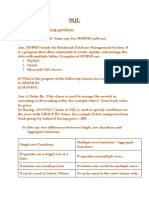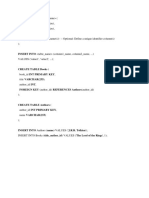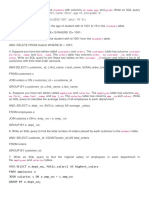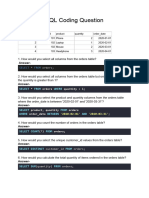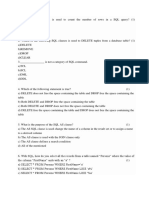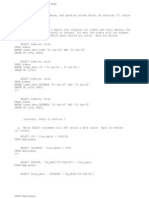0% found this document useful (0 votes)
36 views25 pagesVaishali SQL Assessment
The document contains a series of SQL questions and answers related to joins, common table expressions, functions, case statements, and subqueries. Each section provides specific SQL queries to address various data manipulation and retrieval tasks. The document serves as a guide for practicing SQL syntax and concepts.
Uploaded by
vgvaishali2024Copyright
© © All Rights Reserved
We take content rights seriously. If you suspect this is your content, claim it here.
Available Formats
Download as PDF, TXT or read online on Scribd
0% found this document useful (0 votes)
36 views25 pagesVaishali SQL Assessment
The document contains a series of SQL questions and answers related to joins, common table expressions, functions, case statements, and subqueries. Each section provides specific SQL queries to address various data manipulation and retrieval tasks. The document serves as a guide for practicing SQL syntax and concepts.
Uploaded by
vgvaishali2024Copyright
© © All Rights Reserved
We take content rights seriously. If you suspect this is your content, claim it here.
Available Formats
Download as PDF, TXT or read online on Scribd
/ 25









